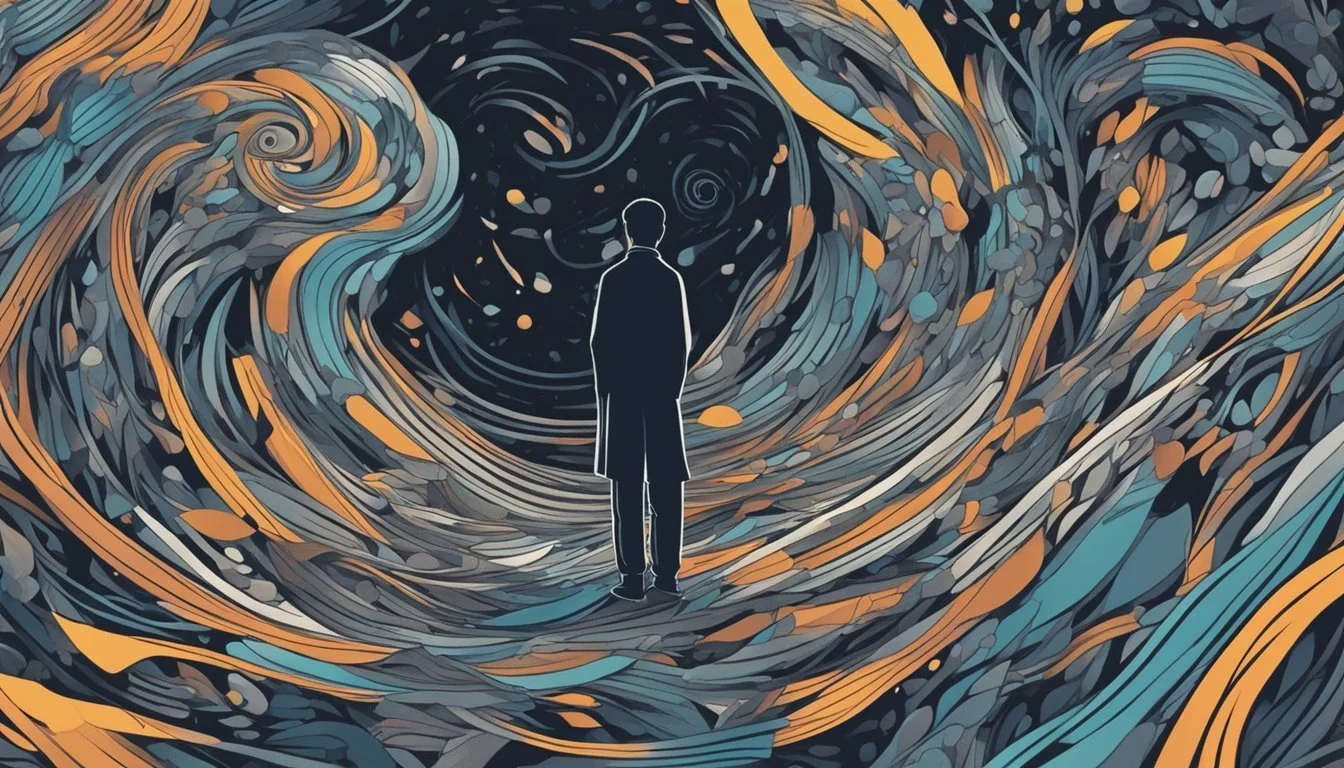Understanding the Unpredictable Nature of Panic Attacks
Panic attacks can feel sudden and unpredictable, leaving many to wonder if they strike at random. While these intense episodes of fear may seem to come out of nowhere, they are not truly random occurrences. Panic attacks are typically triggered by a complex interplay of physical sensations, thoughts, and environmental factors that a person may not immediately recognize.
The experience of a panic attack often involves a rapid onset of symptoms like a racing heart, sweating, trembling, and a sense of impending doom. These physical sensations can be frightening, leading to a cycle of anxiety about anxiety itself. Some individuals develop a fear of having panic attacks, which paradoxically can increase their frequency.
Understanding the nature of panic attacks can help manage them more effectively. While they may feel random, identifying personal triggers and learning coping strategies can reduce their impact. Recognizing that panic attacks are not dangerous, despite their intense symptoms, is an important step in breaking the cycle of fear and anxiety that often perpetuates them.
Understanding Panic Attacks
Panic attacks are intense episodes of fear or anxiety that can occur suddenly and without warning. They involve a range of physical and psychological symptoms that can be deeply distressing for those who experience them.
Definition and Types
A panic attack is a sudden surge of overwhelming fear or anxiety that triggers severe physical reactions. There are two main types: expected and unexpected panic attacks. Expected attacks are linked to specific triggers or situations, while unexpected attacks seem to occur out of the blue.
Panic disorder is diagnosed when a person experiences recurrent unexpected panic attacks and becomes excessively worried about having future attacks. It's one of several anxiety disorders that can significantly impact daily life.
Common Symptoms
Panic attacks typically involve a combination of physical and psychological symptoms. Common physical symptoms include:
Rapid heartbeat or palpitations
Chest pain or tightness
Shortness of breath
Sweating
Trembling or shaking
Dizziness or lightheadedness
Nausea
Hot flashes or chills
Psychological symptoms may include:
Intense fear or terror
Feeling of unreality or detachment
Fear of losing control
Fear of dying
These symptoms usually peak within 10 minutes and rarely last longer than 30 minutes.
Anatomy of a Panic Attack
A panic attack begins when the body's fight-or-flight response is triggered, often by a perceived threat. This activates the sympathetic nervous system, releasing stress hormones like adrenaline.
The surge of adrenaline causes rapid breathing and increased heart rate. Blood flow is redirected to major muscle groups, preparing the body for action. This can lead to tingling sensations or numbness in extremities.
As breathing quickens, carbon dioxide levels in the blood drop, potentially causing dizziness and lightheadedness. The digestive system slows, which may result in nausea.
These physical changes can create a feedback loop, intensifying feelings of panic. The mind may interpret these bodily sensations as signs of serious illness, further fueling anxiety.
Causes and Triggers
Panic attacks stem from various factors that interact in complex ways. While they may seem random, underlying causes and triggers often contribute to their occurrence. Understanding these elements can help manage and prevent panic attacks.
Role of Stress and Anxiety
Stress and anxiety play significant roles in triggering panic attacks. Chronic stress can heighten the body's fight-or-flight response, making it more sensitive to potential threats. This heightened state can lead to panic attacks even in seemingly calm situations.
Anxiety disorders, particularly generalized anxiety disorder and social anxiety, can increase the likelihood of experiencing panic attacks. The constant worry and fear associated with these conditions can create a fertile ground for panic symptoms to emerge.
Certain life events or transitions can also act as stressors, potentially triggering panic attacks. These may include job changes, relationship issues, or major life decisions.
Medical Conditions and Substance Use
Some medical conditions can mimic or contribute to panic attacks. Thyroid problems, particularly hyperthyroidism, can cause symptoms similar to panic attacks. Heart conditions may also trigger episodes of intense fear and physical discomfort.
Certain medications can induce panic-like symptoms as side effects. It's important to review any medications with a healthcare provider if panic attacks occur.
Substance use, including caffeine, alcohol, and recreational drugs, can impact the nervous system and trigger panic attacks. Stimulants may increase heart rate and anxiety, while withdrawal from depressants can lead to heightened anxiety and panic symptoms.
Genetic and Environmental Factors
Genetic predisposition plays a role in panic disorder. Individuals with a family history of anxiety or panic disorders may be more susceptible to experiencing panic attacks.
Early life experiences, such as trauma or prolonged exposure to stress, can shape how the brain responds to perceived threats. This can increase vulnerability to panic attacks later in life.
Environmental factors like living in high-stress environments or areas with limited social support can contribute to the development of panic attacks. Conversely, a supportive environment can help reduce the frequency and intensity of panic episodes.
Learning and conditioning also play roles. If a person associates certain situations with panic, they may be more likely to experience attacks in similar contexts in the future.
Why Panic Attacks Can Seem Random
Panic attacks often appear to strike without warning, leaving many to believe they are entirely unpredictable. While seemingly random, these episodes typically have underlying triggers and patterns that can be identified with careful observation and analysis.
Unexpected Panic Attacks
Panic attacks can occur suddenly and without apparent cause. This unexpected nature contributes to the perception of randomness. Many individuals report experiencing attacks while engaged in routine activities or even during sleep. The abrupt onset of intense fear and physical symptoms like racing heart, sweating, and shortness of breath can be deeply unsettling.
Some people develop a fear of future attacks, leading to heightened anxiety and increased vulnerability. This fear itself can become a trigger, creating a cycle of panic. External stressors, internal bodily sensations, or specific situations may act as subtle cues that go unnoticed until the panic attack is in full swing.
Symptomatic Patterns and Prediction
Despite their seemingly random nature, panic attacks often follow identifiable patterns. Keeping a detailed log of attacks can reveal common triggers or circumstances. Time of day, location, recent events, and physical state may all play a role in the onset of an attack.
Recognizing early warning signs is crucial. These may include mild anxiety, increased heart rate, or feeling on edge. By identifying these precursors, individuals can take steps to manage symptoms before they escalate. Cognitive-behavioral therapy techniques can help in recognizing and addressing thought patterns that contribute to panic.
Physical health factors like caffeine intake, sleep quality, and exercise habits can influence the frequency and intensity of attacks. Regular medical check-ups are important to rule out underlying health conditions that may mimic or exacerbate panic symptoms.
Distinguishing Between Panic and Anxiety Attacks
Panic attacks and anxiety attacks share some similarities but have distinct characteristics. Understanding these differences can help with proper diagnosis and treatment.
Characteristic Differences
Panic attacks typically occur suddenly and intensely. They often peak within 10 minutes and involve overwhelming fear. Common symptoms include rapid heartbeat, chest pain, difficulty breathing, and a sense of impending doom. Many people experiencing a panic attack report a fear of dying.
Anxiety attacks, on the other hand, tend to build gradually. They're usually linked to specific stressors and can last for extended periods. Symptoms may include worry, restlessness, and tension. While uncomfortable, anxiety attacks rarely reach the same intensity as panic attacks.
Panic attacks can happen unexpectedly, even during sleep. Anxiety attacks are more predictable, often tied to known triggers.
Response to Treatment
Treatment approaches for panic and anxiety attacks may differ. Panic attacks often respond well to cognitive-behavioral therapy (CBT) and exposure therapy. These methods help individuals recognize and manage their symptoms.
For anxiety attacks, a combination of therapy and stress-reduction techniques can be effective. Mindfulness practices and relaxation exercises may help manage ongoing anxiety.
Medication can be useful for both conditions. Antidepressants and anti-anxiety medications are common options. However, the specific drugs and dosages may vary depending on whether panic or anxiety is the primary concern.
Regular exercise and healthy lifestyle habits can complement treatment for both types of attacks.
Diagnosis and Assessment
Diagnosing panic disorder involves professional evaluations and specific criteria. Mental health experts assess symptoms and their impact on daily life to determine an accurate diagnosis.
Professional Evaluations
A mental health professional conducts a thorough assessment to diagnose panic disorder. This typically includes:
A detailed medical history review
Physical examination to rule out other conditions
Psychological evaluation
The expert may use standardized questionnaires to gather information about symptoms, frequency, and severity of panic attacks. They also explore the patient's fears and concerns related to the attacks.
Criteria for Panic Disorder
To diagnose panic disorder, professionals refer to specific criteria. These include:
Recurrent unexpected panic attacks
Persistent worry about future attacks for at least one month
Significant changes in behavior due to the attacks
Symptoms not attributed to other medical conditions or substances
The fear of losing control is a key aspect assessed during diagnosis. Professionals evaluate how this fear impacts the individual's daily functioning and quality of life.
Panic attacks must occur repeatedly and cause significant distress or impairment in social, occupational, or other important areas of functioning to meet the diagnostic criteria for panic disorder.
Treatment Options
Effective treatments are available to help manage panic attacks and panic disorder. These include medications, psychotherapy approaches, and lifestyle changes that can reduce symptoms and improve quality of life.
Medications
Several types of medications can help treat panic attacks:
Selective serotonin reuptake inhibitors (SSRIs)
Serotonin and norepinephrine reuptake inhibitors (SNRIs)
Benzodiazepines
Tricyclic antidepressants
SSRIs and SNRIs are often prescribed as first-line treatments. They work by altering brain chemistry to reduce anxiety and panic symptoms. Benzodiazepines provide rapid relief but carry a risk of dependence, so they are typically used short-term. A doctor can determine the most appropriate medication based on a person's specific symptoms and health history.
Psychotherapy and Behavioral Therapy
Cognitive behavioral therapy (CBT) is considered highly effective for treating panic disorder. It helps people identify and change thought patterns and behaviors that contribute to panic attacks.
Exposure therapy, a form of CBT, gradually exposes individuals to panic-inducing situations in a controlled way. This helps reduce fear and anxiety over time.
Other helpful approaches include:
Panic-focused psychodynamic psychotherapy
Mindfulness-based therapies
Acceptance and commitment therapy
These methods teach coping skills and strategies to manage symptoms when they arise.
Lifestyle Changes and Coping Strategies
Simple lifestyle modifications can complement other treatments and help reduce the frequency and intensity of panic attacks:
Regular exercise
Adequate sleep
Stress management techniques
Limiting caffeine and alcohol intake
Breathing exercises and relaxation techniques like progressive muscle relaxation can help during a panic attack. Keeping a journal to track triggers and symptoms allows individuals to identify patterns and develop personalized coping strategies.
Support groups provide a space to share experiences and learn from others facing similar challenges. Many find that a combination of professional treatment and self-help strategies works best for managing panic disorder long-term.
Impact on Quality of Life
Panic attacks and anxiety disorders significantly affect an individual's quality of life, influencing daily activities, relationships, and overall well-being. These conditions can lead to considerable distress and impairment across various life domains.
Managing Chronic Anxiety and Panic
Chronic anxiety and panic disorder symptoms can severely impact one's quality of life. Persistent worry and fear often disrupt daily routines and limit personal growth. Individuals may struggle with concentration, sleep disturbances, and physical symptoms like rapid heartbeat or sweating.
Effective management strategies are crucial for improving life quality. These may include:
Cognitive-behavioral therapy
Medication (e.g., antidepressants or anti-anxiety drugs)
Relaxation techniques (deep breathing, meditation)
Regular exercise
Proper sleep hygiene
Seeking professional help is essential for developing personalized coping mechanisms and treatment plans.
Social Implications
Panic attacks and anxiety disorders can profoundly affect social interactions and relationships. Individuals may avoid social situations due to fear of having a panic attack in public. This avoidance behavior can lead to isolation and reduced social support.
Common social challenges include:
Difficulty maintaining friendships
Strain on romantic relationships
Impaired work performance
Limited participation in social activities
Agoraphobia, a related condition, may cause individuals to avoid leaving their homes, further restricting social engagement. Support groups and therapy can help address these social challenges and improve overall quality of life.
Support and Resources
Finding help and connecting with others who understand panic attacks can make a significant difference. Professional treatment and peer support provide valuable tools for managing symptoms and improving quality of life.
Support Groups and Networks
Support groups offer a safe space for individuals with panic disorder to share experiences and coping strategies. Many organizations host in-person and online meetings where members can discuss challenges and successes. These groups often provide educational resources and guest speakers to enhance understanding of anxiety disorders.
Local mental health centers, hospitals, and community organizations frequently organize support networks. National organizations like the Anxiety and Depression Association of America (ADAA) maintain directories of support groups across the country. Online forums and social media groups also connect people with panic disorder, allowing for 24/7 support and information sharing.
Finding Professional Help
Mental health professionals play a crucial role in diagnosing and treating panic attacks. Psychiatrists can prescribe medications if needed, while psychologists and therapists offer various forms of psychotherapy. Cognitive-behavioral therapy (CBT) is particularly effective for panic disorder.
To find qualified professionals:
Ask primary care physicians for referrals
Contact insurance providers for in-network options
Use online directories from reputable mental health organizations
Check with local universities or teaching hospitals
It's important to find a therapist who specializes in anxiety disorders. Many professionals offer initial consultations to determine if they're a good fit. Patients should feel comfortable discussing their symptoms and treatment preferences with their chosen provider.
Advancements in Understanding
Recent research has shed new light on the neurobiological mechanisms behind panic attacks. Scientists have identified key brain regions and neural pathways involved, paving the way for more targeted treatments.
Neurological Insights
Brain imaging studies have revealed increased activity in the amygdala during panic attacks. This almond-shaped structure plays a crucial role in processing fear and emotions. Researchers have also observed changes in the prefrontal cortex, which regulates emotional responses.
The sympathetic nervous system triggers the "fight or flight" response during panic attacks. This leads to physical reactions like rapid heartbeat, sweating, and shortness of breath. Conversely, the parasympathetic nervous system helps restore calm after the attack subsides.
Genetic factors may influence susceptibility to panic disorder. Scientists have identified several genes potentially linked to anxiety and panic symptoms. This genetic component interacts with environmental stressors to shape an individual's risk profile.
Future Treatment Approaches
Advancements in neuroscience are driving innovative treatment strategies for panic attacks. Researchers are exploring targeted medications that modulate specific neurotransmitter systems implicated in anxiety disorders.
Virtual reality exposure therapy shows promise as a tool for desensitizing patients to panic-inducing situations. This technology allows for controlled, gradual exposure in a safe environment. Combining VR with biofeedback techniques may enhance its effectiveness.
Neurofeedback training aims to teach patients to regulate their brain activity. By visualizing real-time brain scans, individuals can learn to control anxiety-related neural patterns. This approach may offer a drug-free alternative for managing panic symptoms.
Personalized treatment plans based on genetic and neurological profiles are on the horizon. These tailored approaches could improve outcomes by matching patients with the most effective interventions for their unique biology.





